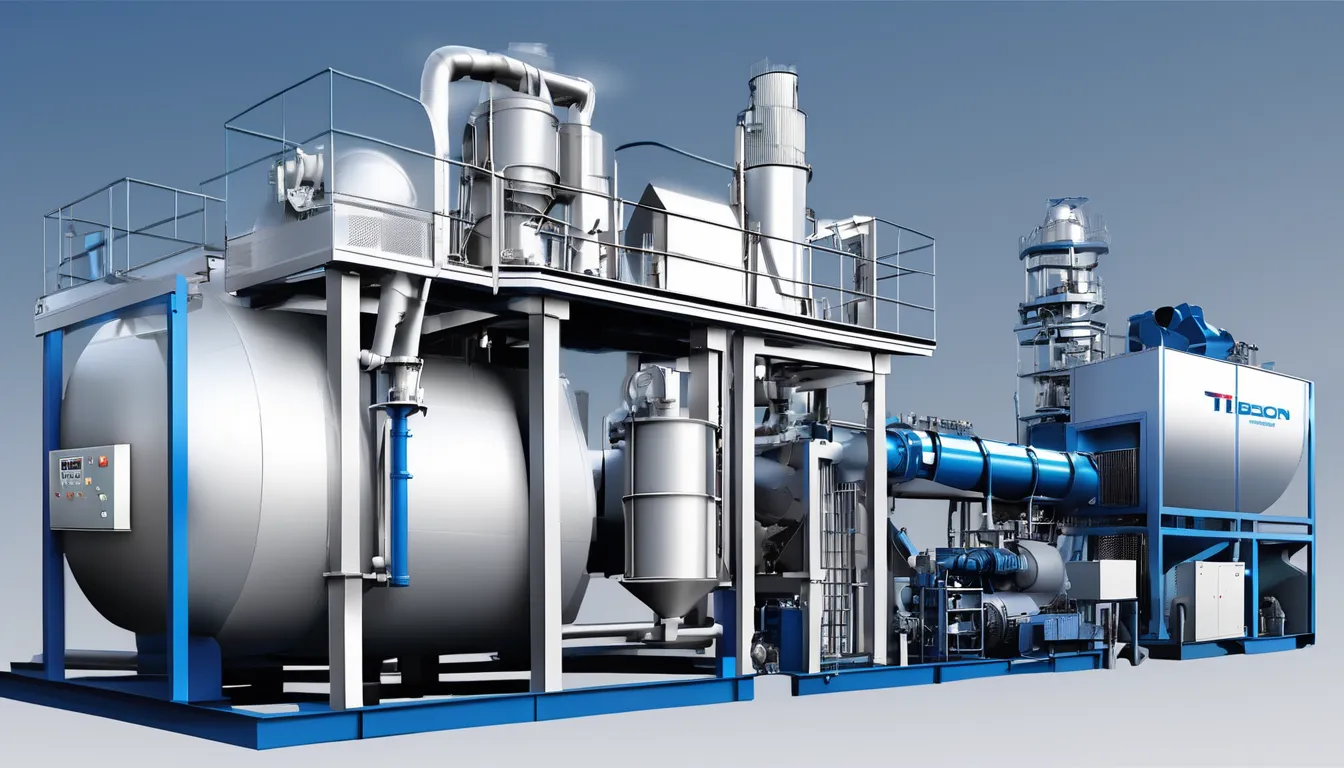As you explore the landscape of turbo expander technology, you’ll notice that recent advancements in material science and design are reshaping its role in renewable energy systems. These innovations promise not only improved efficiency but also greater adaptability to varying operational conditions. With the integration of smart control systems, the potential for optimizing energy extraction is more significant than ever. But what does this mean for the future market trends and their implications on sustainability? Understanding these dynamics could redefine your perspective on energy solutions.
Advances in Material Science
How have advances in material science transformed turbo expander technology?
You’ll find that breakthroughs in materials have significantly improved the efficiency and longevity of turbo expanders. With the development of high-performance alloys and composites, manufacturers can now create components that withstand extreme temperatures and pressures. This means your turbo expander can operate more reliably over extended periods.
Additionally, lighter materials have led to reduced overall weight, which directly enhances system performance. You’ll notice that a lighter turbo expander requires less energy to operate, resulting in better fuel efficiency and lower operational costs.
Advanced coatings also play a crucial role, providing resistance to wear and corrosion, which extends the equipment’s lifespan.
These innovations allow for tighter tolerances in design, resulting in improved aerodynamic performance. You might even see turbo expanders running at higher speeds without compromising safety or integrity.
Ultimately, advances in material science aren’t just about making turbo expanders more robust; they’re about pushing the boundaries of what these systems can achieve, making them more efficient, reliable, and cost-effective for various applications.
Enhanced Design Features
Turbo expanders are benefiting from enhanced design features that maximize their performance and efficiency. These advanced designs focus on optimizing aerodynamic profiles, which improve the flow of gas and increase energy extraction. You’ll notice that manufacturers are implementing improved blade geometries that reduce turbulence and enhance the overall efficiency of the expander.
Additionally, lightweight materials are being integrated into the design, allowing for reduced inertia and quicker response times. This means you can expect better performance in dynamic applications where rapid adjustments are crucial. The use of sophisticated computational fluid dynamics (CFD) tools enables engineers to fine-tune designs for specific operational conditions, ensuring that each expander is tailored to maximize its output.
Another key feature is the incorporation of modular designs, which facilitate easier maintenance and upgrades. This adaptability means you can keep your system performing at its best without extensive downtime or costly overhauls.
Smart Control Systems
With the rise of smart control systems, turbo expanders are becoming more efficient and adaptable than ever. These advanced systems utilize real-time data analytics and machine learning algorithms to optimize performance and respond to changing operational conditions.
You’ll find that integrating smart controls allows for precise management of energy consumption, reducing waste and enhancing overall system efficiency.
Imagine having the ability to monitor your turbo expander’s performance from anywhere, adjusting parameters to ensure optimal functionality. Smart control systems can predict maintenance needs, alerting you before issues escalate, ultimately minimizing downtime and repair costs. You’re not just reacting to problems anymore; you’re proactively managing your equipment.
The beauty of these systems lies in their adaptability. Whether you’re operating in varying load conditions or facing fluctuations in input temperatures, smart controls adjust seamlessly, ensuring that your turbo expander runs at peak efficiency.
This level of intelligence not only improves performance but also extends the lifespan of your equipment.
As you explore the future of turbo expander technology, embracing smart control systems will be crucial. They empower you to harness the full potential of your machinery while navigating the complexities of modern energy demands.
Applications in Renewable Energy
Harnessing the potential of turbo expanders in renewable energy applications is revolutionizing the way we generate and utilize power.
These devices play a crucial role in improving the efficiency of various renewable energy systems, particularly in geothermal and biomass power plants. By converting high-pressure gas into mechanical energy, turbo expanders help optimize energy extraction from these resources.
In geothermal energy systems, turbo expanders enhance the recovery of energy from steam, enabling you to generate more electricity from the same heat source.
Similarly, in biomass applications, they facilitate the conversion of biogas into usable power, contributing to a more sustainable energy landscape.
Moreover, in wind energy, china Turbo Expander s can be integrated into energy storage solutions, where they convert excess energy into compressed air for later use. This application helps balance supply and demand, making wind energy more reliable.
As you explore the potential of turbo expanders, you’ll find they not only improve efficiency but also help reduce greenhouse gas emissions.
Future Market Trends
The future of turbo expander technology looks promising, driven by increasing demand for energy efficiency and sustainability. As industries seek innovative solutions to reduce operational costs and environmental impact, turbo expanders are becoming essential components.
You might want to keep an eye on these key market trends:
- Growing Adoption in Renewable Energy: With the rise of solar and wind energy, turbo expanders are being integrated into systems to enhance energy recovery and maximize output.
- Enhanced Efficiency Standards: Regulatory bodies are pushing for higher efficiency standards, which will likely lead to advancements in turbo expander designs and materials.
- Integration with Smart Technologies: The move towards Industry 4.0 means turbo expanders will increasingly incorporate smart monitoring systems for real-time performance optimization.
- Market Expansion in Emerging Economies: As developing countries invest in infrastructure and energy projects, the demand for turbo expanders will grow, creating new opportunities.
Conclusion
As turbo expander technology evolves, you can expect significant improvements in efficiency and sustainability. With advancements in materials, innovative designs, and smart control systems, these devices will play a crucial role in renewable energy applications. By embracing these innovations, you’ll not only optimize energy extraction but also reduce operational costs and environmental impacts. Keep an eye on future market trends, as the shift towards greener solutions will shape the energy landscape for years to come.


